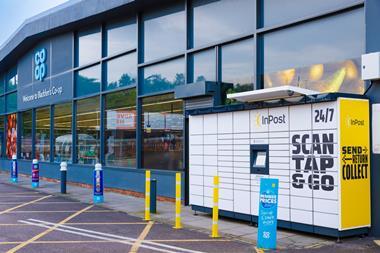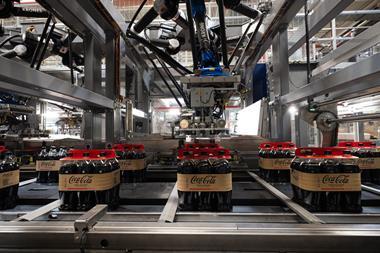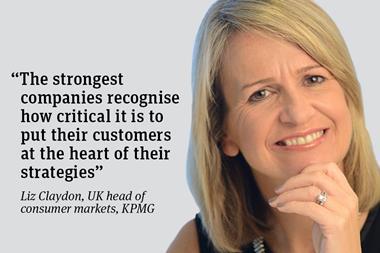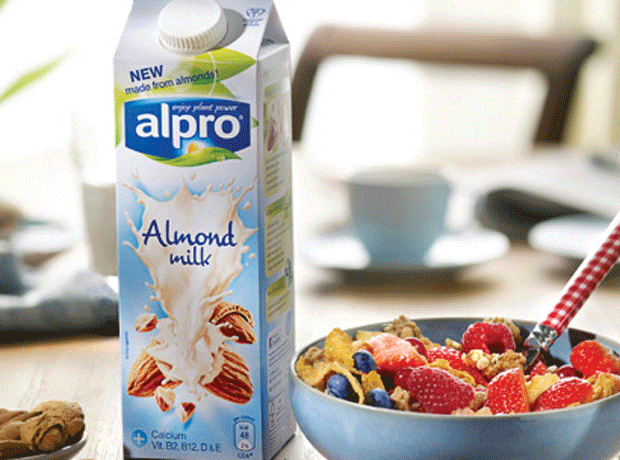Somerfield’s new bosses must narrow the price gap to compete with rivals, says Fiona McLelland
Somerfield has been under private ownership for just a month, yet the scale of Violet Acquisitions’ ambitions is already apparent. In former Asda boss Paul Mason and former Tesco grocery trading director Colin Smith, whose appointment we revealed last week, it has created a new dream team.
The duo, who will take up their posts shortly as chief executive and trading and marketing director alongside chairman John Lovering, have certainly got their work cut out. And reducing the price gap between Somerfield and its competitors will be a major test, City retail analysts believe. That much is borne out by The Grocer 33 shopping basket survey, which this week reveals that Somerfield is 14% pricier than the cheapest retailer.
One analyst says: “Given that Somerfield pricing is at a premium for convenience business, they will want to drive volumes to get better prices from suppliers.”
However, the pair should be well equipped to deal with the challenge, he suggests. “Paul’s experience is in the value and discount end of the market. That experience may help Somerfield to cut the price gap on its competitors. And with Lovering as chairman and Smith on board, the new owners have got a big-name team.”
Some have questioned Smith’s departure from Tesco, but the analyst argues that the route up the corporate ladder had been blocked. “As the commercial director role was given to Richard Brasher, Smith’s thinking will have been that he couldn’t go further in his Tesco career,” he says. “It was no secret that he was out in the United States with a mind to taking over any operation out there - without that
opportunity, there’s not a big enough role for him at Tesco.
“He has a huge amount of knowledge about trading terms and how to organise convenience stores. He’ll know what products to put in as Somerfield looks to differentiate itself. He’ll bring an enormous amount of consumer insight to the business.”
Others are less convinced. One says: “Mason and Smith might be setting up the business to become more price competitive, but competition is hotting up in the convenience market with Tesco and Sainsbury also committed to lowering prices. I’ll be surprised if Somerfield
can narrow the price gap significantly.”
Suppliers will be keen, therefore, to learn how the trading team at Somerfield will be restructured and who will be brought in by Smith, pictured above from a few years ago, when he was still sporting his beard (there are very few shots of the media-shy trader).
Lovering, Mason and Smith will have to balance any price-cutting programme by reducing costs elsewhere in the business. The Somerfield recovery plan, initiated by former chairman Jon von Spreckelsen in 2000, has gone some way in creating efficiency savings and a long-term review of its distribution network ended two weeks ago with the announcement that two depots were to close in April. A week later, the company announced that there would be wholesale changes to its supplier base.
Shore Capital retail analyst Clive Black says: “Somerfield will simplify the business and reduce costs both at head office and store, but you can rely on rationalisation only for so long and a reduced range could remove the reason to shop in the store.”
Kwik Save also needs to be tackled and analysts agree the best move is to get rid of the problematic discounter. Easier said than done: the last time Kiwk Save was put on the market six years ago, there were no takers.
Allen Shepherd, associate director of corporate retail at property specialist Christie & Co, says: “The last thing they will want is to make a knee-jerk reaction. They are more interested in building turnover and buying stores. However, if they have identified stores that are difficult to trade, they will sell.”
And he points out that the Kwik Save stores, which are mostly 8,000 to 12,000 sq ft, may well suit Asda’s new discount format.
Clearly, the Somerfield dream team will have its work cut out for it.
Somerfield has been under private ownership for just a month, yet the scale of Violet Acquisitions’ ambitions is already apparent. In former Asda boss Paul Mason and former Tesco grocery trading director Colin Smith, whose appointment we revealed last week, it has created a new dream team.
The duo, who will take up their posts shortly as chief executive and trading and marketing director alongside chairman John Lovering, have certainly got their work cut out. And reducing the price gap between Somerfield and its competitors will be a major test, City retail analysts believe. That much is borne out by The Grocer 33 shopping basket survey, which this week reveals that Somerfield is 14% pricier than the cheapest retailer.
One analyst says: “Given that Somerfield pricing is at a premium for convenience business, they will want to drive volumes to get better prices from suppliers.”
However, the pair should be well equipped to deal with the challenge, he suggests. “Paul’s experience is in the value and discount end of the market. That experience may help Somerfield to cut the price gap on its competitors. And with Lovering as chairman and Smith on board, the new owners have got a big-name team.”
Some have questioned Smith’s departure from Tesco, but the analyst argues that the route up the corporate ladder had been blocked. “As the commercial director role was given to Richard Brasher, Smith’s thinking will have been that he couldn’t go further in his Tesco career,” he says. “It was no secret that he was out in the United States with a mind to taking over any operation out there - without that
opportunity, there’s not a big enough role for him at Tesco.
“He has a huge amount of knowledge about trading terms and how to organise convenience stores. He’ll know what products to put in as Somerfield looks to differentiate itself. He’ll bring an enormous amount of consumer insight to the business.”
Others are less convinced. One says: “Mason and Smith might be setting up the business to become more price competitive, but competition is hotting up in the convenience market with Tesco and Sainsbury also committed to lowering prices. I’ll be surprised if Somerfield
can narrow the price gap significantly.”
Suppliers will be keen, therefore, to learn how the trading team at Somerfield will be restructured and who will be brought in by Smith, pictured above from a few years ago, when he was still sporting his beard (there are very few shots of the media-shy trader).
Lovering, Mason and Smith will have to balance any price-cutting programme by reducing costs elsewhere in the business. The Somerfield recovery plan, initiated by former chairman Jon von Spreckelsen in 2000, has gone some way in creating efficiency savings and a long-term review of its distribution network ended two weeks ago with the announcement that two depots were to close in April. A week later, the company announced that there would be wholesale changes to its supplier base.
Shore Capital retail analyst Clive Black says: “Somerfield will simplify the business and reduce costs both at head office and store, but you can rely on rationalisation only for so long and a reduced range could remove the reason to shop in the store.”
Kwik Save also needs to be tackled and analysts agree the best move is to get rid of the problematic discounter. Easier said than done: the last time Kiwk Save was put on the market six years ago, there were no takers.
Allen Shepherd, associate director of corporate retail at property specialist Christie & Co, says: “The last thing they will want is to make a knee-jerk reaction. They are more interested in building turnover and buying stores. However, if they have identified stores that are difficult to trade, they will sell.”
And he points out that the Kwik Save stores, which are mostly 8,000 to 12,000 sq ft, may well suit Asda’s new discount format.
Clearly, the Somerfield dream team will have its work cut out for it.















No comments yet